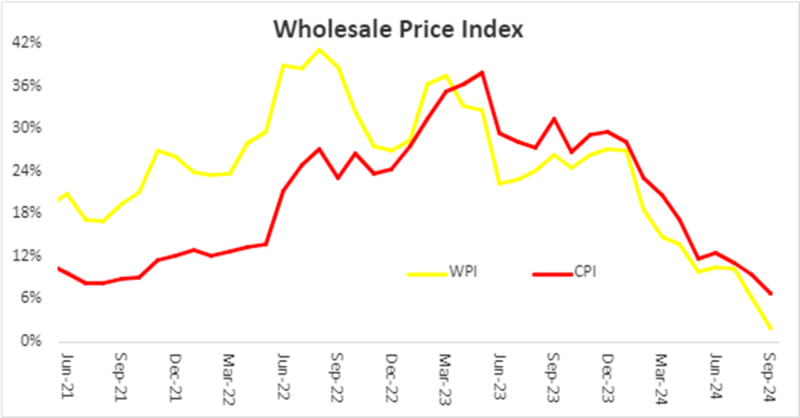Single-digit inflation is the talk of the town, and the Wholesale Price Index (WPI) joins the race like never before. The WPI at 1.95 percent year-on-year is the lowest in 52 months, and if the peak lockdown-infused June 2020 WPI is taken out of the equation, WPI is the lowest since the starting point of rebased WPI in July 2016. widely anticipated that the WPI may have bottomed out earlier, especially after the budget that had many tax-related measures and, more importantly, a significant upward revision in electricity tariffs.
That never materialized, as the government did not increase electricity tariffs for industries on the same scale as other categories and instead reduced the cross-subsidy incidence. The WPI composition is significantly altered from a year ago, with the weighted contribution from the electricity sub-group in WPI at 199 percent—the highest ever.
It must be reminded that the WPI methodology is restricted to changes only in general industrial tariffs for natural gas and does not account for significant upward revisions that have happened of late for industrial gas users for captive generation. There is an element of underreporting the impact of the actual gas price increase, strictly owing to shortcomings in methodology.
The biggest drag to WPI comes from the transportable goods category, with a weighted contribution of a negative 196 percent on a year-on-year basis. A considerable respite in petroleum prices on the back of remarkably stable currency, reduced crude oil prices, and the authorities’ restraint in imposing maximum Levy have all contributed to a 25 and 20 percent year-on-year reduction in diesel and petrol prices, respectively. Diesel with the single largest weight in the category had the largest contribution to the WPI decline. The year-on-year decline in both HSD and motor gasoline is the steepest in nearly four years. While a reduction in fuel prices does not always translate into reduced prices of transportable goods, the high weights of HSD and petrol directly lead to the overall reduction in WPI.
An area that continues to baffle observers is that of cotton yarn price in the WPI data. The WPI shows cotton prices at the wholesale level staying unchanged for 35 straight months. The methodology detail lists five items of different cotton yarn varieties to be collected from different spinners, with specific details provided. While one hopes for the PBS to come up with clarifications, it is highly unlikely, given its track record of addressing any anomalies. The unchanged prices for 35 months surely seem absurd, as the retail prices of cotton variants in the same period have nearly doubled in the same period.
The international food price index tracked by the United Nations FAO has continued to pick up, registering the sixth straight month of increase. The September Food Price Index registered the highest monthly increase since March 2022. Stil way below the peak of 2022, the index is gradually inching upwards, especially as meat, oil, and cereal baskets have shown signs of supply shortages in various markets. Pakistan’s dairy and meat consumption is largely indigenous, and the impact on food prices comes from edible oil and, to some extent, the cereal markets.
The recent dramatic escalation of the security situation in the Middle East has brought back the war risk premium to international crude oil prices. Oil has gained 12 percent in less than a week, as threats of supply disruptions are now greater than at any point since the Russia-Ukraine war started. Pakistan has so far resisted increasing taxation on petroleum consumption, but with the IMF program formally here, it cannot linger the decision for much longer. Higher crude prices could play spoilsport in the single-digit inflation party.
Read the full story at the Business Recorder - Latest News website.



